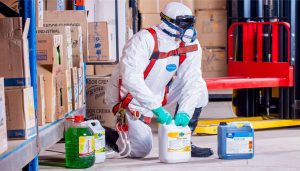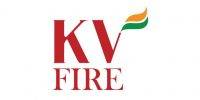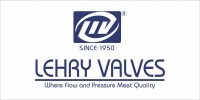 In the realm of industrial workplaces, safety isn’t just a moral commitment—it’s a legal mandate. Employers bear the weighty responsibility of providing workers with the right personal protective equipment (PPE) to safeguard them from potentially hazardous chemicals and toxic substances. The path to ensuring chemical safety within your facility involves a combination of understanding legal requirements, selecting the appropriate equipment, and diligently training your workforce. Here, we embark on a journey through the intricate landscape of chemical PPE for the workplace, breaking down the legal obligations and the best practices that form the foundation of a robust chemical safety strategy.
In the realm of industrial workplaces, safety isn’t just a moral commitment—it’s a legal mandate. Employers bear the weighty responsibility of providing workers with the right personal protective equipment (PPE) to safeguard them from potentially hazardous chemicals and toxic substances. The path to ensuring chemical safety within your facility involves a combination of understanding legal requirements, selecting the appropriate equipment, and diligently training your workforce. Here, we embark on a journey through the intricate landscape of chemical PPE for the workplace, breaking down the legal obligations and the best practices that form the foundation of a robust chemical safety strategy.
Who Bears the Burden of Providing PPE?
Under the umbrella of Occupational Safety and Health Administration (OSHA) standards, employers are the primary providers of personal protective equipment, shouldering the responsibility of equipping their workforce with the necessary gear to mitigate risks. With exceptions, such as cases where an employee intentionally damages or loses their PPE, the onus remains on the employer to replace PPE that is no longer usable. It’s crucial to remember that PPE encompassing protection from chemicals, such as safety goggles and chemical aprons, does not fall under these exceptions. Regardless of whether employees are expected to use the equipment regularly, employers must maintain an ample supply of PPE on-site. Unforeseen chemical spills or emergencies can strike when least expected, making the presence of readily accessible PPE paramount.
Navigating OSHA Standards for Chemical PPE
The Occupational Safety and Health Administration sets the stage for chemical safety within industrial workplaces through its comprehensive standards. OSHA 1910.132, in particular, states unequivocally that protective equipment, ranging from eye protection and face shields to respiratory devices, shall be provided, used, and maintained in a sanitary and reliable condition wherever hazards—be they due to processes, environmental factors, chemical, radiological, or mechanical irritants—pose the potential to cause injury or impair bodily functions through absorption, inhalation, or physical contact. The language is clear, stating that this equipment “shall be provided.” This places the onus on the employer to ensure employees have access to the right equipment. To adhere to OSHA’s standards, employers must keep the following key principles in mind:
- PPE must be aptly suited to the specific hazard at hand.
- Regular inspections of PPE should be conducted, and worn-out equipment must be replaced promptly.
- PPE should not restrict employees’ movements or cause discomfort, ensuring that they can work effectively while wearing it.
Incorporating these principles hinges on the completion of a hazard assessment.
Conducting a Comprehensive Hazard Assessment
The first step towards effective chemical safety involves conducting a thorough hazard assessment. OSHA mandates this assessment, with the flexibility for employers to perform it according to their best judgment. In some cases, a simple walk-through of the facility is sufficient, wherein data about potential hazards is collected, organized, and analyzed. Periodic reassessments should be part of the ongoing safety protocol. While inspecting each area of the workplace, employers should pose critical questions to identify potential hazards. These include whether work in the area could expose workers to chemical splashes, whether employees will be handling potential irritants, and if the workspace is well-ventilated or will expose workers to potentially harmful gases. Additionally, employers should determine whether tasks involve the mixing, cooking, cleaning, or pouring of chemicals. This preliminary analysis enables employers to pinpoint hazards and develop protocols to address them.
Common Sources of Chemical Hazards
Identifying potential hazards is a complex task, and for operations involving acids, caustic products, and chemicals, it is advisable to hire a qualified third-party consultant to conduct the hazard assessment. Such professionals provide a deeper layer of legal protection for employers while offering accurate hazard identification. The goal of a hazard assessment is to minimize unnecessary risks and develop robust protocols for handling unavoidable hazards. Assessments can employ control banding, a technique that categorizes chemicals based on their properties and the specific dangers they present.
This method guides the selection of suitable PPE. While PPE cannot replace engineering controls entirely, it provides the last line of defense against chemical hazards. The ultimate objective is to enable workers to execute their tasks safely, even when confronted with hazardous chemicals.
Engineering Controls for Chemical Hazards
 OSHA emphasizes that engineering and work practice controls should be the primary methods employed to reduce employee exposure to toxic chemicals as much as feasible. Employers must strive to eliminate hazards where possible, whether by substituting less hazardous chemicals or implementing physical changes to the workspace. There are cases, such as in forklift battery rooms where employees regularly handle battery acid, where the elimination of hazards isn’t feasible. Here, a consideration is to introduce engineering controls to limit exposure. For instance, the acquisition of equipment such as the WG-X Water Gun can minimize overflows during battery watering processes, reducing potential hazards. Ventilation, job rotation, schedule changes, minimizing contact with hazardous materials, and enclosing or isolating processes that generate chemical hazards are among the strategies recommended by OSHA to further reduce exposure.
OSHA emphasizes that engineering and work practice controls should be the primary methods employed to reduce employee exposure to toxic chemicals as much as feasible. Employers must strive to eliminate hazards where possible, whether by substituting less hazardous chemicals or implementing physical changes to the workspace. There are cases, such as in forklift battery rooms where employees regularly handle battery acid, where the elimination of hazards isn’t feasible. Here, a consideration is to introduce engineering controls to limit exposure. For instance, the acquisition of equipment such as the WG-X Water Gun can minimize overflows during battery watering processes, reducing potential hazards. Ventilation, job rotation, schedule changes, minimizing contact with hazardous materials, and enclosing or isolating processes that generate chemical hazards are among the strategies recommended by OSHA to further reduce exposure.
Selecting and Outfitting Employees with the Right PPE
Selecting the appropriate PPE for chemical hazards is a critical decision for employers. Not all PPE offers protection against chemical risks, making it essential to consider materials, functionality, and other factors when making purchases. The following factors are crucial when choosing equipment for your operation:
- Chemical PPE Boot and Shoe Covers: Shoe covers serve to prevent the tracking of liquids across the facility, protecting the floor from contamination. They also simplify cleanup, sparing workers the need to change footwear between tasks. Ideal shoe covers should be made from durable materials, offering protection against chemical exposure without compromising traction. Their fit should be secure to prevent tearing or slipping.
- Chemical PPE Gloves: Hand protection is of paramount importance, and the right gloves are vital in safeguarding employees against chemical hazards. For instance, latex gloves are inappropriate for chemical protection, whereas nitrile gloves offer robust defense against oils, bases, and many solvents. Neoprene gloves provide added protection from acids and bases, and PVC gloves are standard for petrochemical applications. For handling acids and batteries, rubber gloves are a necessity. Ensuring that gloves fit comfortably, are flexible, and suited to the specific task is vital.
- Chemical PPE Safety Eyewear: The choice of eyewear is a significant contributor to eye safety in industrial settings. Goggles are the preferred choice, providing a protective seal around the eyes that safeguards against sprays, splashes, and mists. Indirect ventilation is advisable to prevent fogging and ensure user comfort.
- Face Shields: Though not a substitute for dedicated eyewear, face shields provide an extra layer of protection when dealing with specific tasks. They are especially useful when handling chemicals that can cause facial exposure. Employers should be cautious and understand that face shields alone cannot protect against impact hazards. Their selection should be in alignment with the tasks they are used for.
- Chemical Coveralls and Aprons: Workers should ideally wear long-sleeved shirts and long pants while dealing with chemicals. Coveralls or chemical aprons provide an additional layer of protection, simplifying emergency response protocols. In the event of minor chemical spills, workers can safely address the situation without the need to remove and clean their clothing. Chemical aprons and coveralls are made from acid-resistant materials, ensuring compliance and protection against hazardous substances.
- All-in-One PPE Safety Kits: Outfitting your facility with comprehensive PPE kits can streamline the process and ensure that you always have the right equipment readily available. Solus Group offers a range of PPE kits, each designed to meet specific industrial application requirements, from basic disposable kits to deluxe kits that encompass more comprehensive protection. Outfitting your workforce with the right PPE kit ensures that they are equipped to handle the common tasks associated with their roles, especially in sensitive areas like forklift battery maintenance.
- Eyewash Stations and Showers: Even with the correct PPE, accidents can still occur. To comply with OSHA standards and provide a rapid response to emergencies, employers must ensure the presence of eye wash and body flushing stations in near proximity to areas where hazardous chemicals are used. These stations are critical in the event of chemical exposure. Factors to consider when installing these stations include easy access, water flow rate, station upkeep, and appropriate signage to guide employees to these essential safety features.
- Training Workers to Use PPE Safely: Equipping employees with PPE is only part of the process; training them in its correct usage is equally important. OSHA mandates PPE training for employers and requires meticulous record-keeping of training efforts. An effective training program should cover when PPE is necessary, which PPE to use, how to correctly wear, adjust, and remove PPE, the limitations of PPE, and proper care, disposal, and the useful lifespan of PPE. Regular testing of employees to ensure their understanding of these principles is essential. Employers are responsible for identifying employees who may require additional training due to a lack of knowledge or skill in using PPE correctly. New employees should receive training, and employees should be retrained when switching positions or when the workplace undergoes significant changes. Annual refresher training is a practical strategy to assess and address any gaps in employee knowledge.
- Storing Chemical PPE Safely: Access to PPE during emergencies is crucial, and improper storage can lead to equipment degradation or difficulties in maintaining inventory. Dedicated storage areas, ideally in well-ventilated, secure cabinets, are advisable. The ability to move these cabinets to accommodate changing layouts is a practical consideration. Accessibility to employees while maintaining security is key.
The Chemical PPE Checklist for Employers
Incorporating comprehensive chemical safety within your industrial operation necessitates careful consideration and planning. As a guide, here’s a checklist for employers to ensure their employees are well-equipped for safe work with chemicals:
- Procured an adequate supply of personal protective equipment that addresses the specific hazards within your operation, with additional equipment to maintain a steady inventory.
- Provided employees with suitable shoe covers, chemical aprons, coveralls, safety eyewear, face shields, and respiratory equipment in line with your hazard assessment.
- Ensured that all PPE is appropriately sized for each employee and is constructed from materials that address potential hazards.
- Trained employees on the potential hazards of chemicals or gases present in the workplace, with a documented training plan.
- Stored PPE in a visible and accessible cabinet or storage area, ensuring employees know its location and can access it when needed.
- Installed eye wash and body flushing stations in compliance with OSHA standards in proximity to areas where dangerous chemicals are present.
- Trained employees in the proper use of PPE and spill response procedures, which should include notifying others about a spill, using OSHA-compliant spill kits, and reporting the spill to supervisors or managers.
Ensuring chemical safety within your workplace is not only a matter of legal compliance but a fundamental commitment to the well-being of your employees. By meticulously understanding the legal obligations, conducting comprehensive hazard assessments, and investing in the right PPE, you not only adhere to legal requirements but also create a safe and efficient work environment.
PPE isn’t just gear; it’s your employees’ armor against chemical hazards, and the training and safety measures associated with it form the core of their protection. Properly stored and well-maintained PPE and the presence of safety equipment, such as eyewash stations, complete the framework for comprehensive chemical safety within your operation. The checklist serves as a practical guide to ensure that your facility adheres to the highest standards of chemical safety, protecting your most valuable assets—your employees.




















































